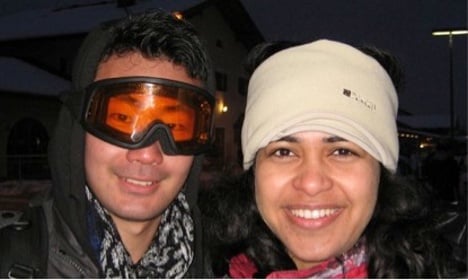Despite being busy working on his science PhD, 29-year-old Li made the time to fill us in on his experience of the Bavarian capital – how to choose between sausages, beer and how to best have fun for free. Although the Oktoberfest is less exciting than it used to be, he still finds more than enough in the city and its environs to keep him busy and happy.
What do you like best about living in Munich?
I love the access to nature. I live in the south-western part of the city, right next to the Westpark. In the summer and spring it’s very beautiful. There are also a lot of lakes around the city. If you enjoy sports, there are loads of things you can do. In the winter you can ski and go snowboarding. In the summer I particularly like doing cycling tours in the Alps. I try to do a tour every month when the weather permits. Hiking is equally popular – it’s so easy to get out of the city. Munich is surrounded by Bavarian villages, where you really can feel at ease.
How do you find the people?
Although Munich is the second biggest city in Germany, it’s still just a village for a lot of its inhabitants. Many people aren’t all that interested in what’s going on elsewhere. They are just happy with Munich and with Bavaria. For this reason they aren’t always necessarily very open to outsiders. But around a fifth of the population are newcomers. You hear a lot of different languages everywhere. So you can say that Munich is now an international place, and I think this has also made it more open.
There’s no escaping traditional Bavarian culture in Munich, though. Are you are fan of the beer and sausages?
I don’t actually like sausages much, but I enjoy drinking beer. I can’t decide which kind I like best. I went through a stage of drinking a lot of white beer, which is quite sweet and delicious, but you can find such a huge variety here.
Where is your favourite place to drink it?
In the summer a beer garden is definitely the best place to sit back and enjoy a beer with friends and pass the time.
What about eating out?
Sometimes I spontaneously go to a local Bavarian pub. It isn’t exactly healthy – there’s a lot of meat and fat – but I find the atmosphere good. In general, though, I don’t eat out much in Munich, because it is quite expensive.
Is there anything you can do in the city for free?
You can do all sorts of sports in the English gardens for free – football, volleyball, jogging and so on. And you can always just walk along the river. In the summer you can do salsa dancing outside in the Hofgarten for nothing. I really enjoy doing that.
Are you a fan of Oktoberfest?
My interest has fallen, largely because there seem to be ever more party people going. But it’s a traditional highlight for Munich, and if you are a visitor here, it’s fun to see the traditional Bavarian costumes – the Lederhosen and the Dirndl.
Where do you get your favourite view of the city from?
All the tourists go to the church on Marienplatz. I prefer the view from the TV tower in the Olympic park. But my top tip though would be to go to the university where there’s a terrace with a beautiful view for free. There’s also a nice café there.
What would be your ideal Sunday in Munich?
I’d grab my bike and go for a cycling tour – with lots of stops for beer along the way!
Can you tell us something about the city which only locals know?
Where to have a barbecue! Not many tourists know where, or realise that you can. You need to go to the Westpark, or head southwards along the River Isar.
Pippa Wentzel



 Please whitelist us to continue reading.
Please whitelist us to continue reading.
Member comments